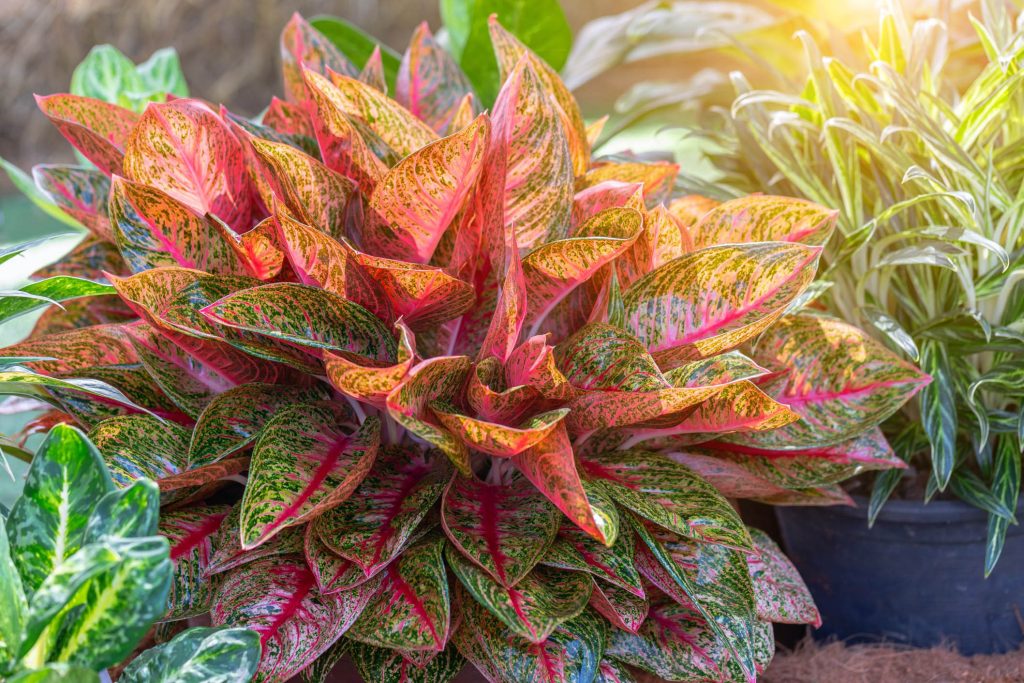Do you want to know how to successfully grow your aglaonema plant? You have come to the right place.
We are aware that due to the decorative nature of the aglaonema plant, it has become a popular, sought-after houseplant, and although there is a high demand of people who want to know how to grow aglaonema, a lot of people assume the plant to be high maintenance.
Contrary to opinions, aglaonema is an easy plant to grow. Although it is slow-growing, learning how to grow and care for it will give you the advantage of beautifying your home with its beautiful foliage.
Aglaonema (Chinese Evergreen) Plant Background
The aglaonema plant is a genus of flowering plants from the Araceae family. The plant is native to tropical and subtropical regions of Asia and New Guinea. Also known as the Chinese evergreen, the plant is a decorative plant with several interesting varieties.
| Common name | Chinese evergreen |
| Botanical name | Aglaonema |
| Light | Indirect light, partial shade. |
| Plant type | Perennial |
| Soil type | Well-drained |
| Soil pH | Acidic |
| Origin | Asia |
| Toxicity | Toxic. |
The plants come in large, glossy, oval, and narrow leaves on short stems and flowers. The plant has foliage that is a combination of different colors i.e. white, dark green, pink, red, and other colors. The plant is a favorite in China and it is often referred to as a lucky plant.
Apart from being a beautiful plant to grow indoor or outdoor, the Chinese evergreen is on the top ten lists of plants that are known to clean air; the plant possesses the natural ability to remove benzene and formaldehyde from the air.
The Chinese evergreen plant has become popular, not just because of its beautiful foliage, but how easy it is to grow.
The plant is also loved because it is perfect for any space indoor. In its natural habitat, aglaonema is usually seen beneath the leaf canopy of large trees and shrubs; all of these shield the aglaonema from the sun.
Although aglaonema is easy to grow, it requires some care to grow to its full potentials. We can assure you that growing aglaonema will be worth your time.
Aglaonema Varieties: Types Of Chinese Evergreen Plants You Should Know
Looking for the most popular Aglaonema varieties in town? Here’s the list for you.
1. Aglaonema Cutlass
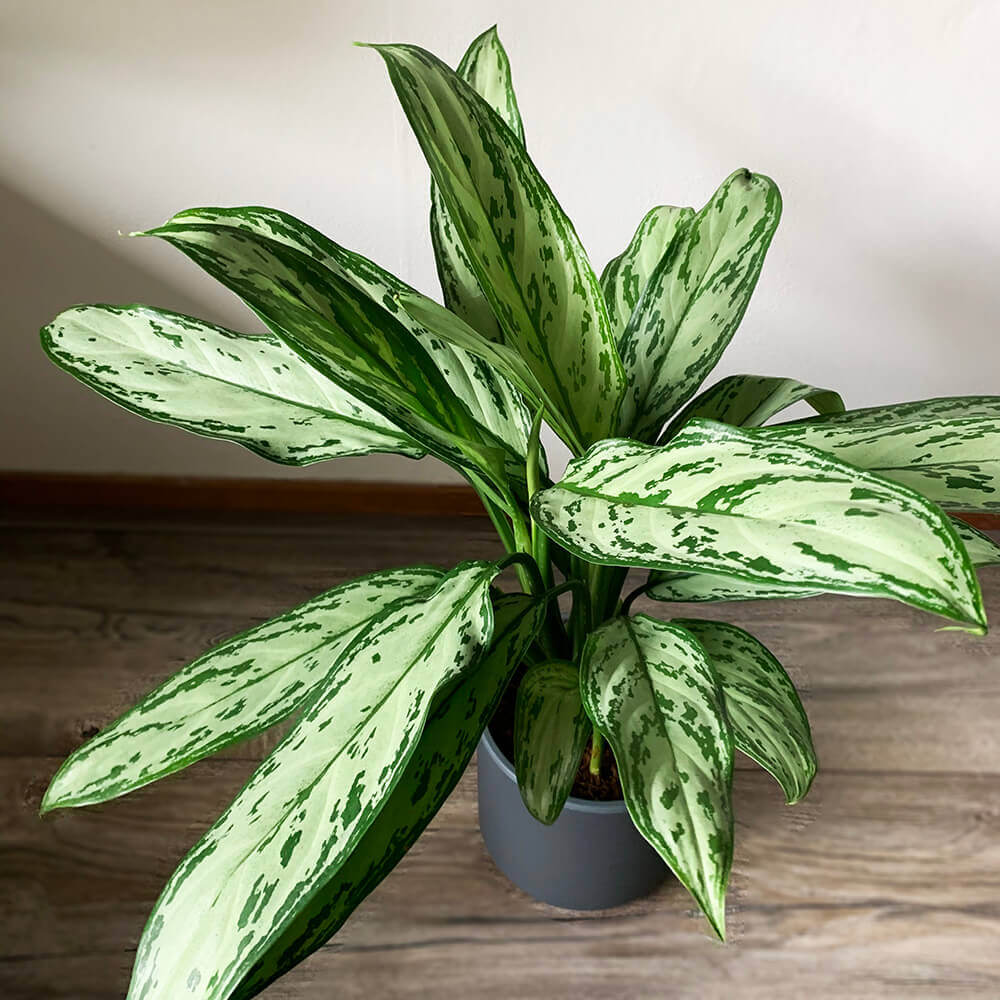
This variety of aglaonema comes in a blade-like leaf. Its foliage is green, with creamy-white color splashed all over it. It has also had dark green central veins on it. The cutlass variety makes a definite statement wherever it is placed.
The plant is a slower growing plant: However, it can grow up to 50cm in height. It is suitable for countertops, bookshelves, office tables, etc.
2. Aglaonema Silver Queen
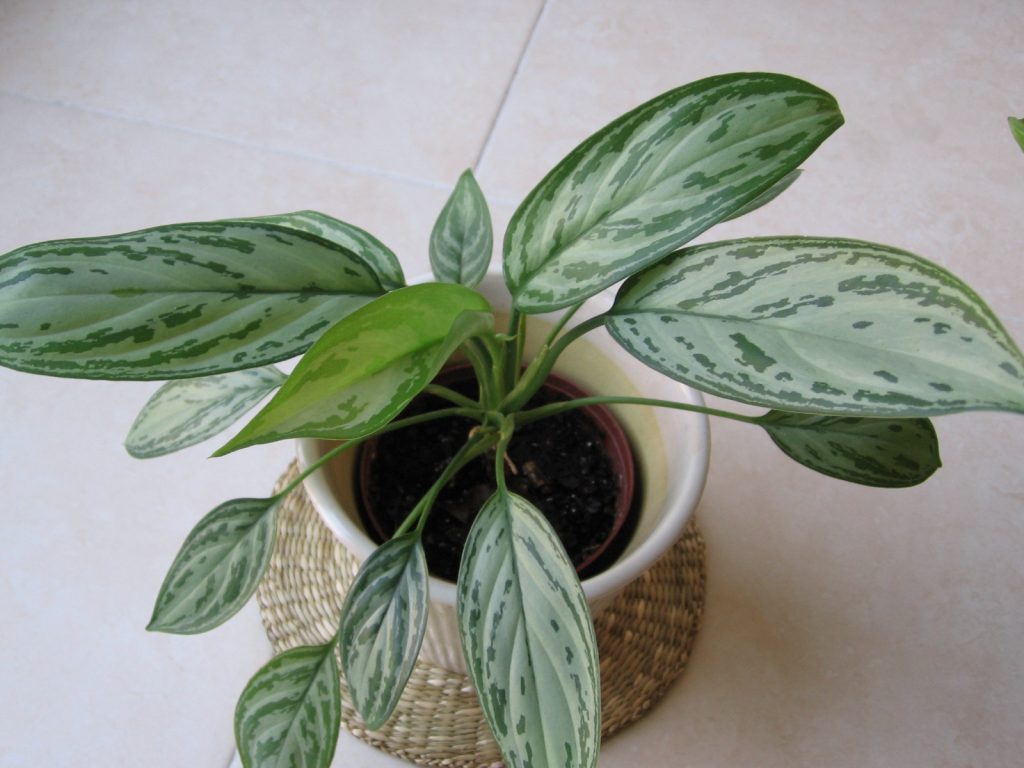
Aglaonema silver queen adds a touch of class to your space, like a queen! The plant is known for its dark green leaves with its attractive accompanying color- silver. The silver variegation on the leaves is thick and in a lance shape.
The plant can grow to about 24 inches tall and grows on short stems from the soil. The silver queen is often referred to as “painted drop tongue”, it is the perfect plant you need to add some lush look to your room.
3. Aglaonema Prestige
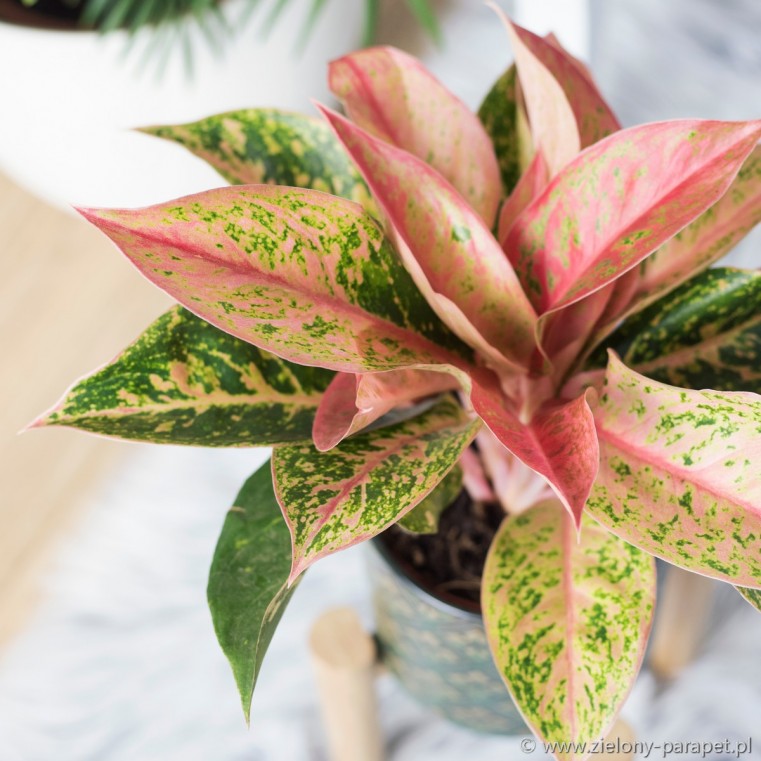
When you need beautiful varieties of aglaonema to grow, the prestige is the one we would recommend. The plant has large, beautiful leaves; these leaves come in different shades of colors i.e. Green, red, pink, cream, etc.
Apart from its beautiful foliage, the plant’s stem is also in a shade of pink, giving it the perfect ornamental plant look. Prestige variety is the complimentary color you need for your interior. It can be placed in the home or even in your office.
4. Aglaonema Red Valentine
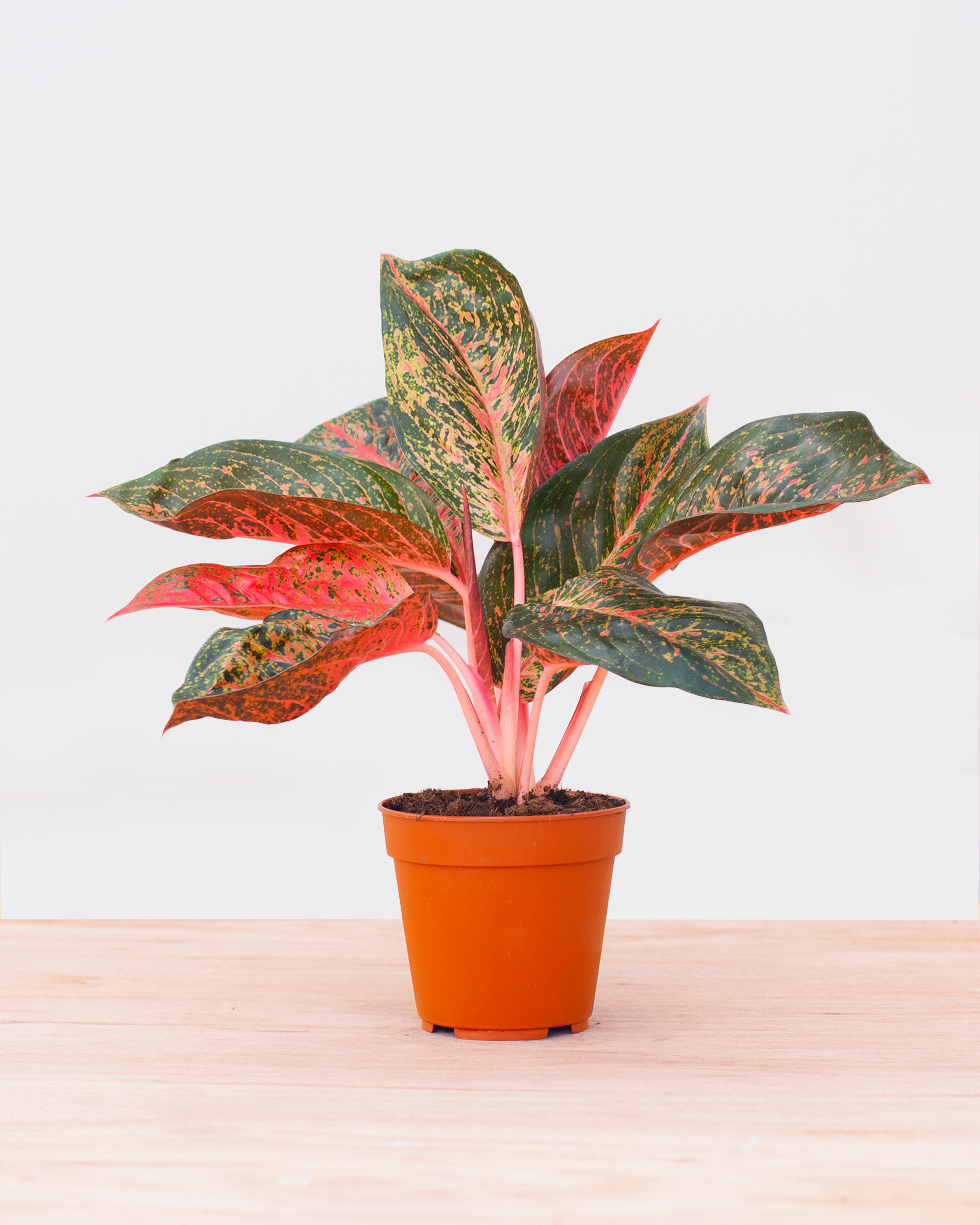
Although the red valentine variety of aglaonema isn’t an easy plant to come by, however, we know it is worth every of your stress.
The plant comes in oval-shaped leaves, with pink or red splashes on the foliage and a dark green margin at the center. The plant’s color emerges as pink and then goes to red as it matures. This plant is known to live for many years and in all kinds of seasons.
5. Aglaonema First Diamond
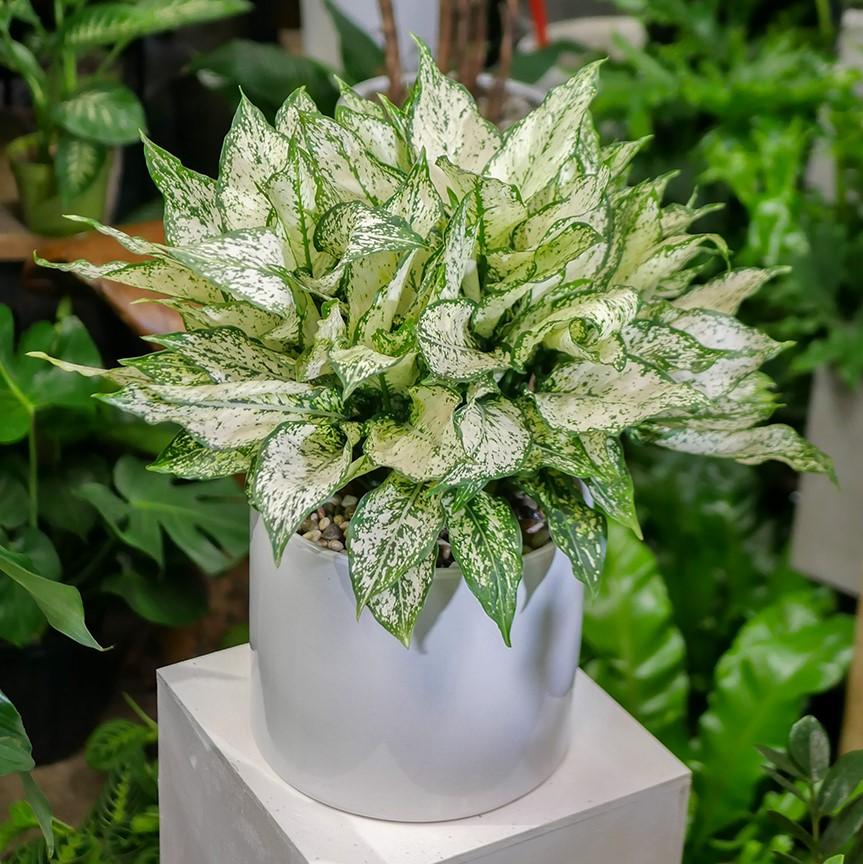
The amazing thing about aglaonema varieties is that they are masters at gaining attention to your space and the first diamond variety is not left out. The plant has a charm with its beautiful variegated green and white foliage.
The plant can grow to about 20cm and also grow on short stems. The plant is known to add colors to its space. Best part? The plant will tolerate a little neglect.
6. Aglaonema Sparkling Sarah
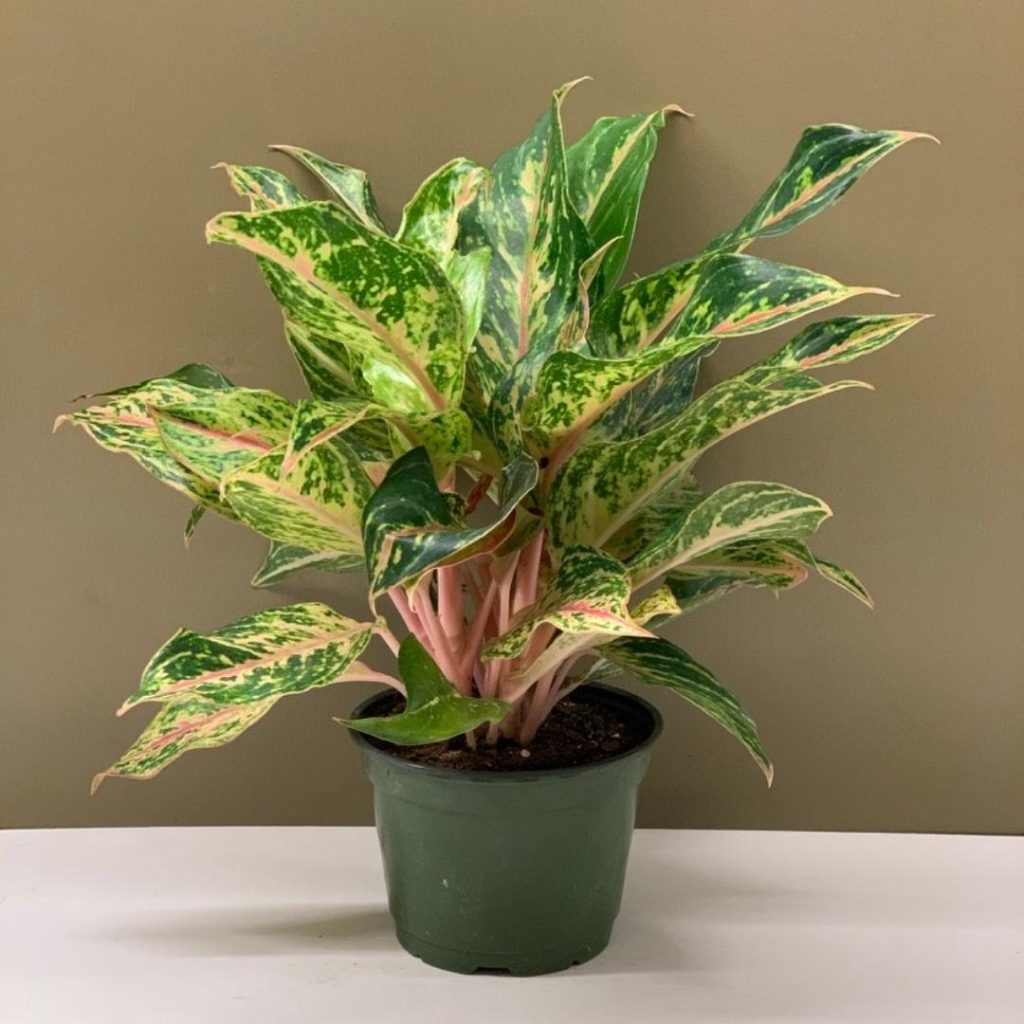
We agree with whoever gave this plant the name “sparkling”. The plant boasts of beautiful variegated foliages with colors pink, cream, and green all over it.
The plant has dark green at the edge, with pink and cream spots, all over its middle alongside a pink vein at the center. Like some of its relatives, the plant has a pink stem that adds to its overall beauty. The plant can make your space a lively one, with colors.
7. Aglaonema Pink Dalmatian
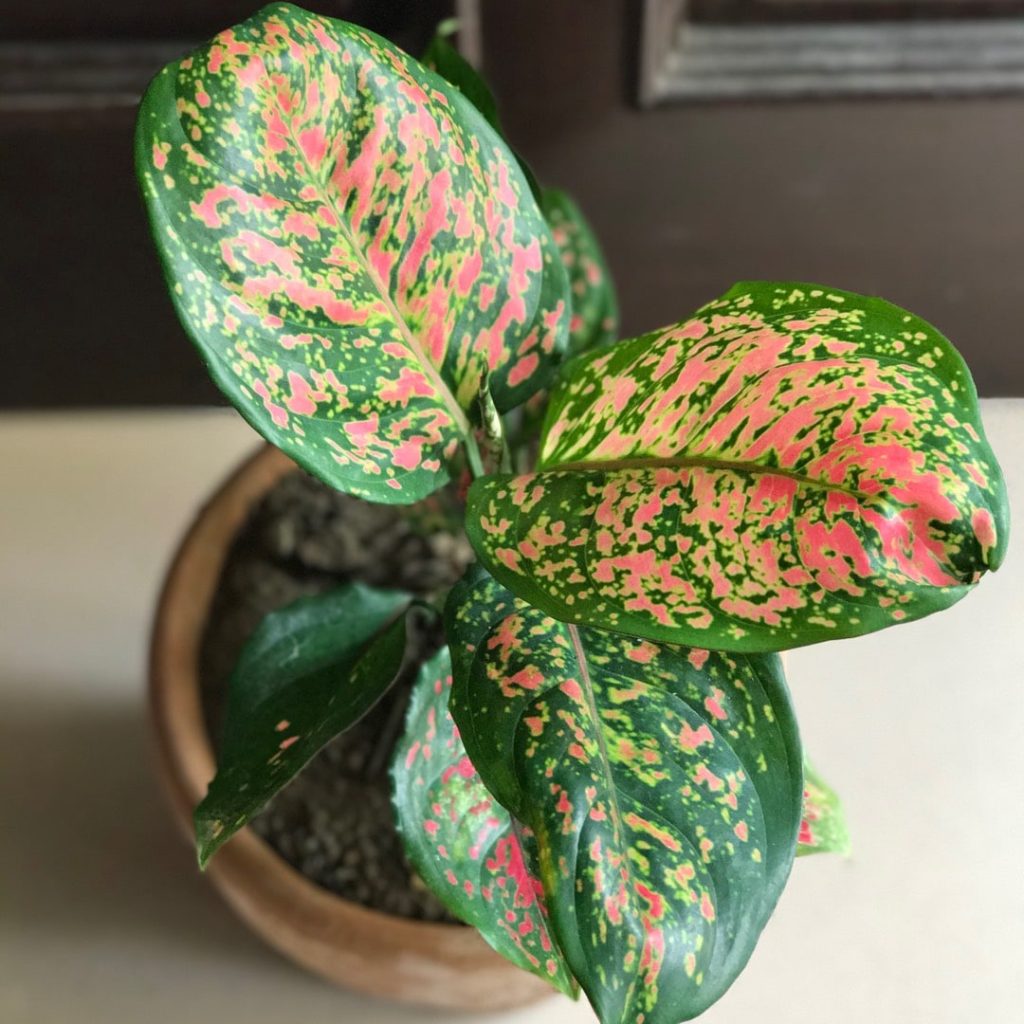
The pink Dalmatian can attribute its name to having pink spots all over it. This also is one reason why we cannot get this plant out of our mind and garden! The plant comes in a large oval-shaped plant and is graced with a combination of pink and green.
If you lay your hands on it, you might want to treat it well so you can have it for a long time, because this beauty is one of the most sought-after varieties in the world.
8. Aglaonema Creta
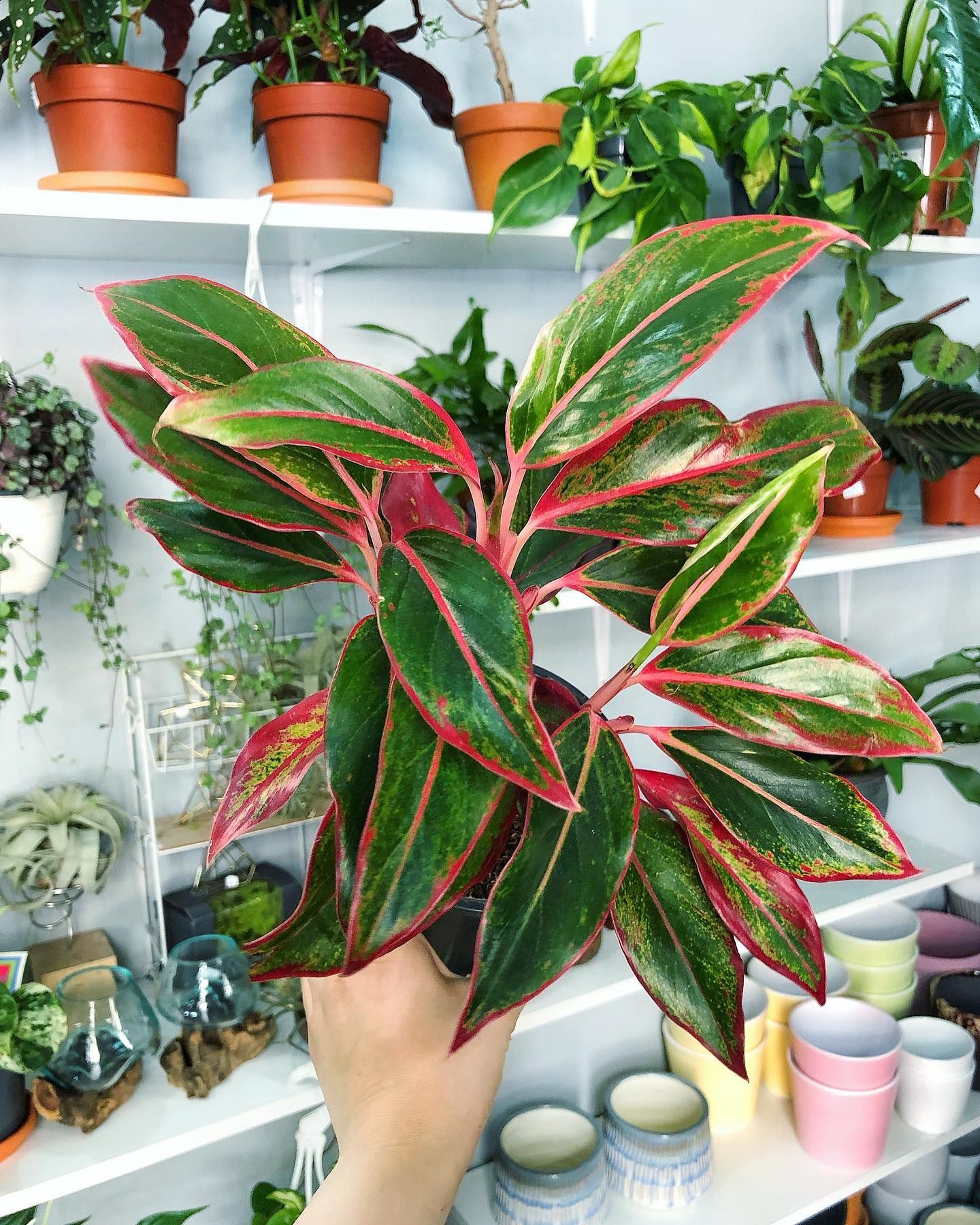
Did you say elegance? The aglaonema Creta is the one for you. Creta comes in beautiful wide, oval-shaped, patterned leaves with pale cream spots and a pink color down the center and the edges of the leaves.
The plant is perfect for whatever space you intend to place it. It is very undemanding and perfect for beginner gardeners who love colors in their homes.
9. Aglaonema Silver Bay
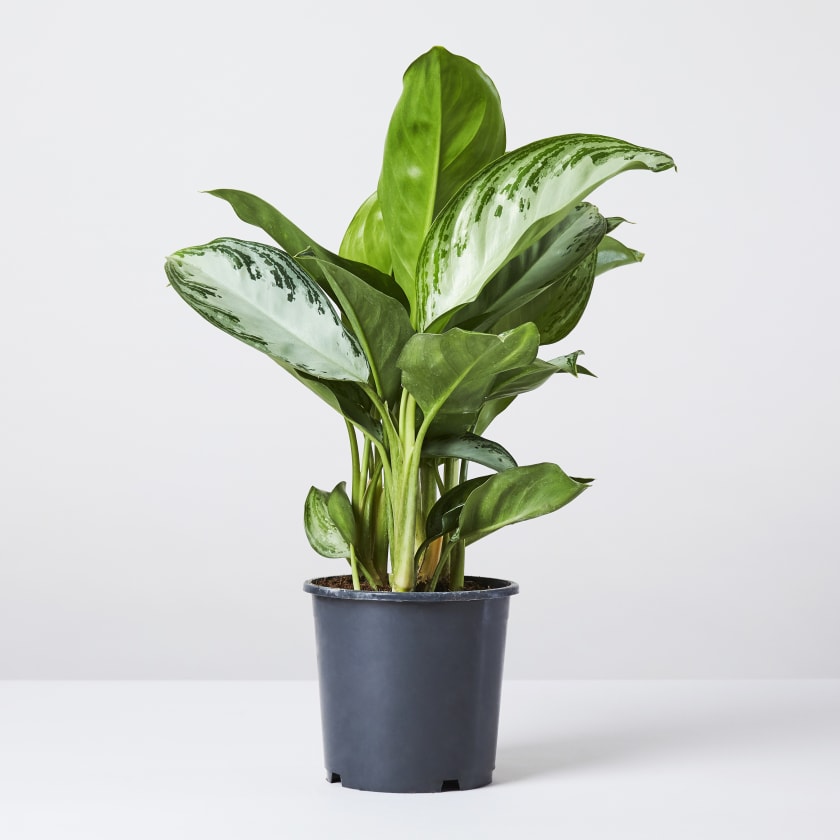
Silver bay comes in a different mix of silver and light/dark green. The plant is an easy-growing one that has the potential to reach about 12 inches tall. It is oval-shaped and glossy. Unlike many of the other varieties of aglaonema, the silver bay is popular and available to grow; it is also a fast-growing one.
10. Aglaonema Pictum Tricolor
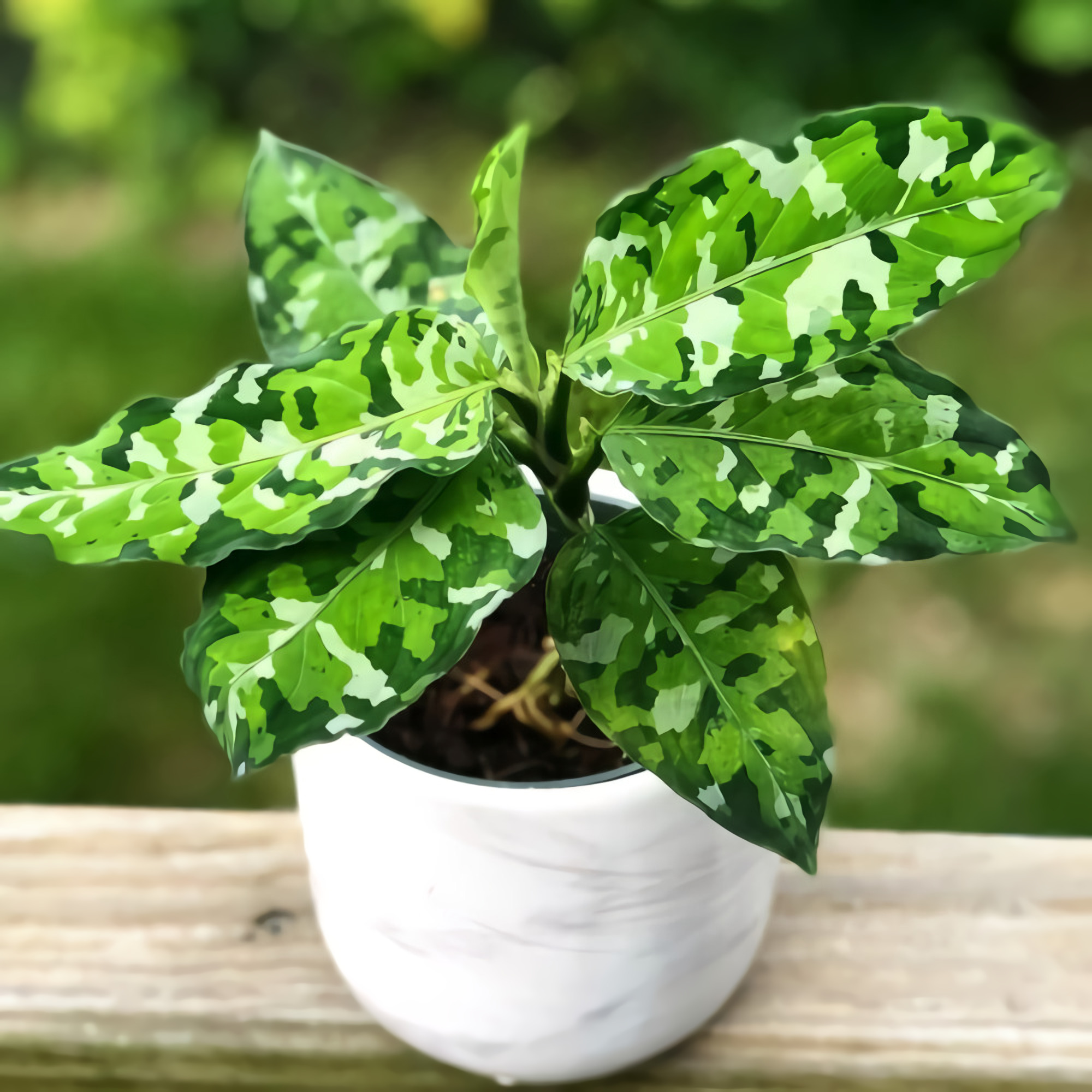
Everyone needs to have a pictum tricolor variety in their home. Like its name, the plant has a mixture of three different shades of green. The oval-shaped plant is a slow grower and also one of the rare and expensive varieties of the genus. It enjoys being placed in bright, indirect light to maintain its colors.
Aglaonema Plant Growth Requirements
Seeing your plant grow healthily is of utmost importance to us, hence we have provided the best requirements to grow a healthy Aglaonema.
1. Light
The lighting provision of the aglaonema has to be similar to that of its natural habitat. In the tropics, the plant was never found, without a covering from the sun, this indicates that the aglaonema is a low light plant. It grows best when placed in indirect light.
Lighting preference comes with each variety i.e. dark green varieties of the plant can tolerate near-shade; however, the variegated varieties need to be exposed to bright, indirect light. The plants should not be exposed to direct sunlight (all varieties) it can lead to burns and ultimately lead to the plant’s death.
2. Water
Watering your Chinese evergreen involves caution. The plant enjoyed moist soil; however, it detests it from being water-logged. This means that there has to be a balance in its watering schedule. In the growing season, the plant should be watered thoroughly and left to dry out before another watering. However, watering should be reduced during the winter.
3. Humidity
A lot of people consider aglaonema to be a greenhouse plant. The greenhouse will provide the warmth and humidity the plant needs. This, however, does not indicate that the plant cannot be grown indoors.
All you need to do for your aglaonema to survive is to provide it with additional sources of humidity. I.e. Peddle tray, regular misting, and humidifier. You could also place it in a high humidity environment in your homes such as the kitchen and the bathroom.
4. Temperature
The perfect temperature at which you can grow your aglaonema is between 68 -77 degrees. Aglaonema loves being kept warm, the warmer it is, the better it looks.
The temperature should not be lesser than 60 degrees F. The plant should be kept away from the vent, drafts, or anywhere the plant can get cooler temperatures. It also does not appreciate sharp temperature changes.
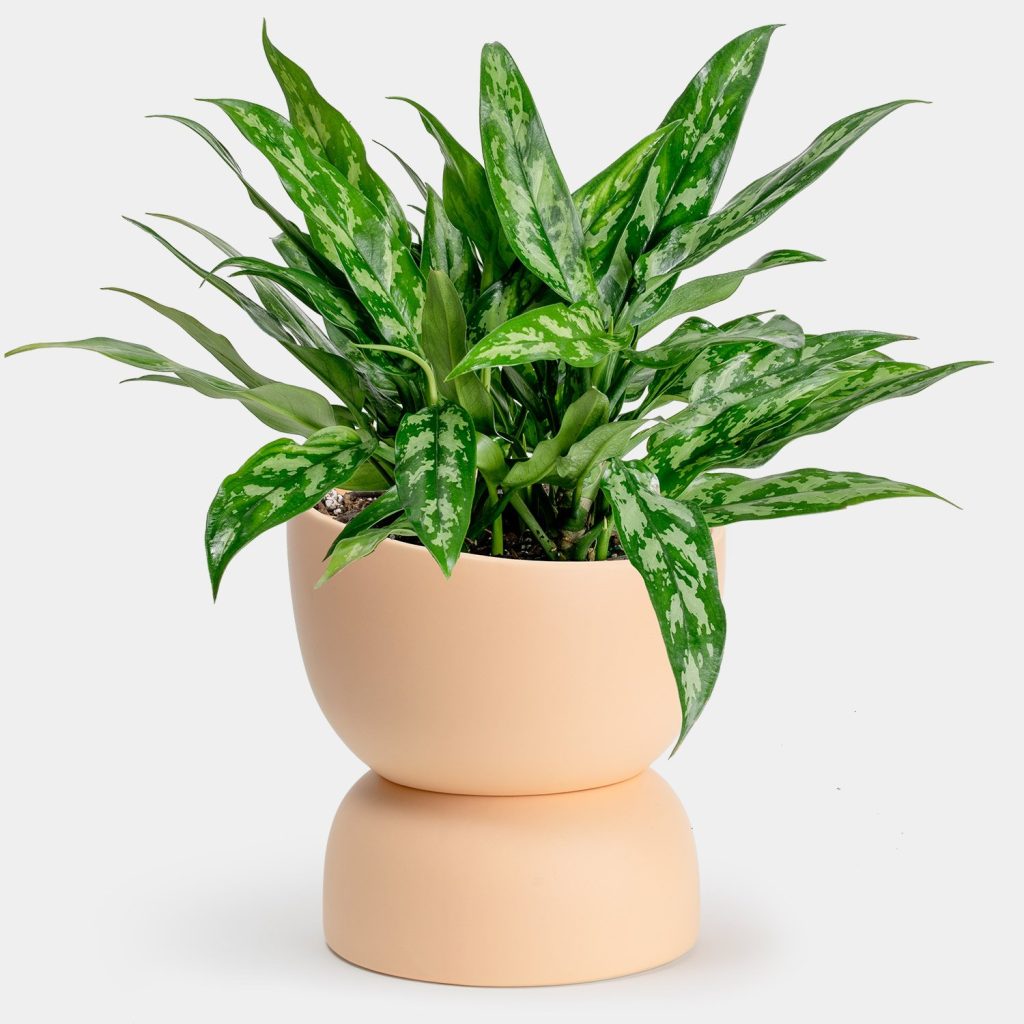
5. Fertilizer
Aglaonema can be fed during the growing season, at most, twice in one month. It is best to feed them with liquid mineral fertilizer; the fertilizer should also be diluted to half its strength before applying it to the plant. Do not feed your plant during the winter.
6. Soil
The aglaonema plant isn’t choosy about what soil it is planted in, however, it is best grown in well-drained, slightly acidic potting soil.
You can also add some perlite to your potting mix, to facilitate better drainage. One sure way to ensure your soil drains well is to purchase a pot with at least one drainage hole. Aglaonema also grows well in hydroponics.
Aglaonema Plant Propagation
Aglaonema can be propagated via stem cutting in water, and soil. A lot of people regard propagating aglaonema as a difficult task because it is a slow-growing plant, however, we can assure you that it is worth all your time.
The following are the methods via which you can propagate your Chinese evergreen.
Stem Cutting In Soil
- Identify a healthy and mature plant. With the use of a clean blade or gardening shears, make your cuttings from it, make sure the cutting is about 6 inches long and has at least 5 leaves on it.
- Get rid of the bottom leaves and place the cutting in a container filled with well-drained potting soil. Gently press the plant into the soil to keep it firm.
- Place the plant in a warm space, with access to indirect light. The plant should develop new roots in four to six weeks; afterward resume the regular aglaonema care routine.
Stem Cutting In Water
An important thing to note about stem cutting in water is that you cannot use the water-propagated specimens in water. I.e. If you decide to propagate in water, the mature plant also has to be kept in water.
- Identify and select a healthy aglaonema plant, make your cutting off about 6 inches, make sure your cutting has about 5 leaves on it.
- Prepare a jar of water and place your cutting in the water. Make sure the water isn’t touching any of the leaves on the cutting.
- Constantly change the water, when it has become cloudy. In about four to six weeks, your plant should develop its roots.
Propagating Aglaonema From Seed
- Collect the fresh seed from the base of your mature aglaonema flowers and wash the seed in acidic water.
- Prepare a potting mix i.e. Coco-peat mix or seed germination soil mix.
- Spread the fresh seeds on top of the mix and cover them lightly.
- Place the container at average room temperature, with slight exposure to indirect sunlight. Your seed should begin to germinate in about 45 to 60 days.
How To Care For Your Aglaonema Plant
Although Chinese evergreen is an easy plant to grow, it still requires certain basic treatments to grow properly. When these care routines are not followed, the Chinese evergreen experiences problems and eventually dies.
The following are measures to put in place to ensure that your plant stays in good health.
- Although the plant isn’t susceptible to pests and diseases, there might be an occasion where your plants have issues with common houseplants’ pests. i.e. mealy bugs, scales, spider mites, etc. common pests can be treated with neem oil or other insecticides.
- The plant indeed enjoys being in moist soil. However, the plant will suffer from diseases and other problems when the soil is too moist.
- Curling and yellow leaves are a sign that your plant has been attacked by infections. In most cases, these infections are usually hard to get rid of. The best thing to do to prevent a spread is to propagate.
- You might not be required to re-pot your plant as often as you might expect, this is because the plant is a slow-growing plant. Re-potting every 3-5 years is advisable.
- Aglaonema is toxic to pets and humans. For safety, make sure you wear gloves before handling the plant.
Aglaonema Plant FAQs
Here are a couple of frequently asked questions from aglaonema plant parents answered for you.
Why are the leaves on my Aglaonema turning yellow?
Root rot, pest infestations, and aging are the major causes of Aglaonema’s leaves turning yellow. A sign that an Aglaonema is becoming old is the leaves start turning yellow, this just means the plant is nearing the end of its life span. Root rot often occurs due to overwatering; overwatering affects the root of the plant and it begins to take effect on the foliage appearance of the plant. when pest infestations are left to linger, the plant may become damaged and a sign is a change in foliage appearance.
Should I cut yellow leaves off Aglaonema?
Yes, you should cut yellow leaves off your Aglaonema although it is dependent on the number of yellow leaves on the plant. if the yellow leaves are not much you could leave it to shed with time. if the yellow leaves are much, you would need to use a pruner to trim off the leaves.
How do you fix yellow leaves?
Yellow leaves occur for several reasons. It could be due to poor lighting, overwatering, root rot, or pest infestation. Identify the reason behind the change in foliage appearance to know how to deal with it. if poor lighting is responsible, change location to an area where it can receive bright but indirect sunlight from the sun; you can make use of bulbs as a substitute. If overwatering root rot is responsible, stay off watering for a while to allow roots to recover. Treat pest infestations upon detection.
Should I mist my Aglaonema?
Yes, you should mist your Aglaonema. Misting provides the humid environment your Aglaonema requires to survive. Misting also enhances the foliage appearance of the Aglaonema as it helps get rid of dirt, dust, and pests. Remember to mist both sides of the plant so no part gets dried out.
Is Aglaonema good for the bedroom?
Yes, Aglaonema is good for the bedroom. It is a perfect indoor plant known for its low maintenance. The Aglaonema can be placed in your bedroom to beautify. An amazing fact of Aglaonema is that it helps facilitate a night of good sleep. If you have sleep disorders or you have found it difficult to sleep soundly, the Aglaonema may be just what you need.
Does Aglaonema bring clean air?
Yes, Aglaonema brings in the clean and fresh air. Some elements present in Aglaonema help get rid of toxins present in the atmosphere. Some of these toxins are benzene and formaldehyde which are leading causes of medical conditions like leukemia and nerve damage. They purify the air to be suitable for your health.
How do you remove dead leaves from Aglaonema?
You could remove dead leaves from the Aglaonema by making use of pruners. Pruners are effective in plucking out and trimming off dead parts of a leaf. also, you could just hand pluck the dead parts of the leaves. If you would be hand plucking the dead parts, remember not to forcefully pluck out dead as they could damage the plant totally.
Is the Aglaonema plant an air purifier?
Yes, Aglaonema plants are air purifiers. Some elements present in Aglaonema help eliminate toxins in the air like benzene and formaldehyde. If you live in an environment where air pollution is prevalent, you may need to propagate Aglaonema to help purify your environment.
Does Aglaonema need humidity?
Yes, your Aglaonema needs humidity. Aglaonema thrives in warm weather conditions. If exposed to extreme weather conditions like winter, the plant may have a low chance of survival. If you reside in an area with extreme weather conditions, you could resort to using humidifiers; they help provide the temperature your Aglaonema needs to survive.
Final Thoughts
You can own and grow your aglaonema plant after all! All you have to do is provide a model of its natural habitat and your plant will grow as healthily as it can be.
Although your plant may face common house plant problems such as pests and diseases, it will get better when you observe and adjust appropriately.
Read next: 40 Pet Safe Houseplants Ideas For Your Home

